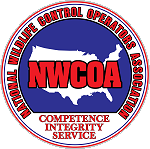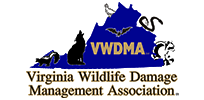Your Wildlife Professionals, Inc. controls moles in residential and commercial yards and landscapes in Virginia. It is not always important to know everything about moles, but often clients need to know other information about moles in Virginia. Below is some additional information about moles, such as mole habitat, where do mole live, home range of a mole, mole food, mole habits, average life span of a mole, and mole health concerns that you may want to know. If you live in Alexandria, Arlington, Bedford, Blacksburg, Bristol, Charlottesville, Covington, Chesapeake, Danville, Fairfax, Fredericksburg, Hampton, Harrisonburg, Lexington, Lynchburg, Loudon, Manassas, Martinsville, Newport News, Norfolk, Richmond, Roanoke, Smith Mountain Lake, Staunton, Virginia Beach, Waynesboro, Williamsburg, Winchester, Wytheville, or Yorktown Virginia and would like to know more about moles, please give us a call.
CLICK HERE to find Your Wildlife Professional in Virginia.
Mole Habitat:
Well drained moist soils containing humus are ideal. Typical habitats are healthy lawns, gardens, pastures, stream banks, and wood lots.
Where Do Moles Live (Home):
Their home is a series of tunnels just below the surface usually built after rain in search of new food sources. These tunnels may only be used once and are dug at a rate of 18 feet per hour. Permanent tunnels are built 6 to 18 inches below the ground surface or below the frost line. All the tunnels lead to a chamber. This chamber is usually located under a place that can give them permanent protection, such as a stump, stone wall, or a bush. The chamber is usually around 5 to 8 inches in diameter.
Mole Home Range:
Averages ½ to 2 acres.
Mole Food:
Earthworms are their primary food source, beetles and grubs are consumed as well. Other insect larvae, adult insects, seed pods, corn, slugs, snails, and small mammals are sometimes consumed. Up to 50 pounds of insects are consumed a year by an adult mole.
Mole Habits:
Diurnal or night and daytime activity. Damp and cloudy days are preferred during the spring and fall months.
Mole Hibernation:
Moles do not hibernate. Most people think that they do. Their activity is primarily below the frost line in the cold months.
Average Life Span of a Mole:
3 years in the wild and up to 5 years in captivity.
Mole Health Concerns
There are not direct health concerns related to the Eastern Mole and humans. They do carry fleas, ticks, and lice. Their sub-surface habits prevent most of these health concerns. Their tunneling habits may cause an individual to fall and injure themselves.
CLICK HERE to find Your Wildlife Professional in Virginia.











